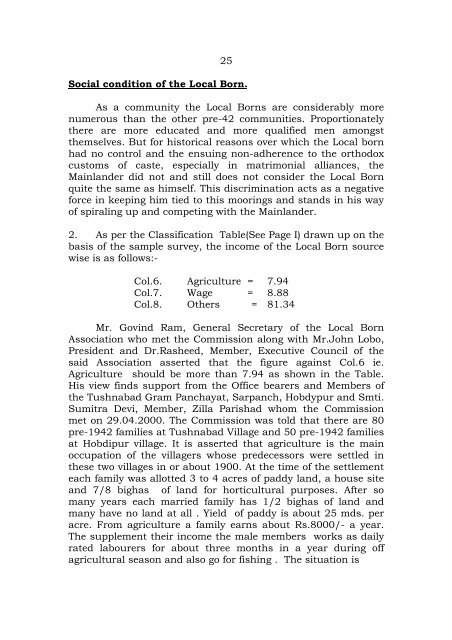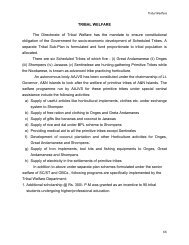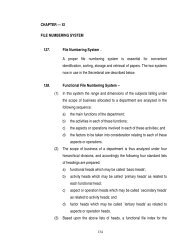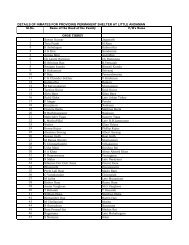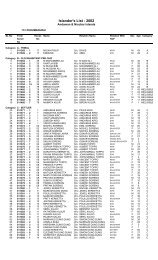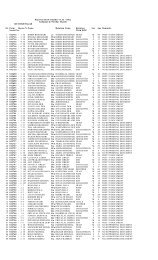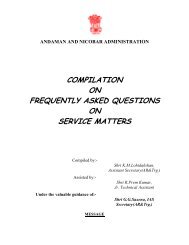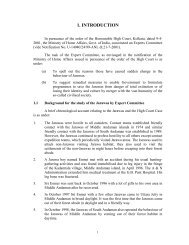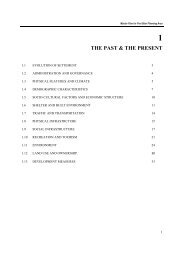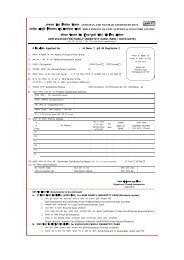Part III - Andaman and Nicobar Islands
Part III - Andaman and Nicobar Islands
Part III - Andaman and Nicobar Islands
Create successful ePaper yourself
Turn your PDF publications into a flip-book with our unique Google optimized e-Paper software.
25<br />
Social condition of the Local Born.<br />
As a community the Local Borns are considerably more<br />
numerous than the other pre-42 communities. Proportionately<br />
there are more educated <strong>and</strong> more qualified men amongst<br />
themselves. But for historical reasons over which the Local born<br />
had no control <strong>and</strong> the ensuing non-adherence to the orthodox<br />
customs of caste, especially in matrimonial alliances, the<br />
Mainl<strong>and</strong>er did not <strong>and</strong> still does not consider the Local Born<br />
quite the same as himself. This discrimination acts as a negative<br />
force in keeping him tied to this moorings <strong>and</strong> st<strong>and</strong>s in his way<br />
of spiraling up <strong>and</strong> competing with the Mainl<strong>and</strong>er.<br />
2. As per the Classification Table(See Page I) drawn up on the<br />
basis of the sample survey, the income of the Local Born source<br />
wise is as follows:-<br />
Col.6. Agriculture = 7.94<br />
Col.7. Wage = 8.88<br />
Col.8. Others = 81.34<br />
Mr. Govind Ram, General Secretary of the Local Born<br />
Association who met the Commission along with Mr.John Lobo,<br />
President <strong>and</strong> Dr.Rasheed, Member, Executive Council of the<br />
said Association asserted that the figure against Col.6 ie.<br />
Agriculture should be more than 7.94 as shown in the Table.<br />
His view finds support from the Office bearers <strong>and</strong> Members of<br />
the Tushnabad Gram Panchayat, Sarpanch, Hobdypur <strong>and</strong> Smti.<br />
Sumitra Devi, Member, Zilla Parishad whom the Commission<br />
met on 29.04.2000. The Commission was told that there are 80<br />
pre-1942 families at Tushnabad Village <strong>and</strong> 50 pre-1942 families<br />
at Hobdipur village. It is asserted that agriculture is the main<br />
occupation of the villagers whose predecessors were settled in<br />
these two villages in or about 1900. At the time of the settlement<br />
each family was allotted 3 to 4 acres of paddy l<strong>and</strong>, a house site<br />
<strong>and</strong> 7/8 bighas of l<strong>and</strong> for horticultural purposes. After so<br />
many years each married family has 1/2 bighas of l<strong>and</strong> <strong>and</strong><br />
many have no l<strong>and</strong> at all . Yield of paddy is about 25 mds. per<br />
acre. From agriculture a family earns about Rs.8000/- a year.<br />
The supplement their income the male members works as daily<br />
rated labourers for about three months in a year during off<br />
agricultural season <strong>and</strong> also go for fishing . The situation is


